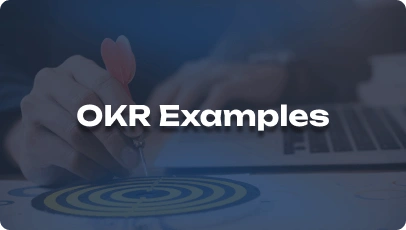In the dynamic field of Human Resources, an Assistant Manager HR plays a crucial role in supporting various HR functions, fostering employee engagement, and ensuring compliance with labor laws and regulations. Mastering the role of Assistant Manager HR can significantly contribute to the success of an organization by driving talent management, enhancing organizational culture, and promoting a positive work environment. As the HR landscape evolves rapidly, professionals in this role must stay abreast of emerging trends, technologies, and best practices to effectively navigate the challenges of today’s workplace.
1. How do you ensure compliance with changing labor laws and regulations in your HR practices?
Answer: By conducting regular audits, staying updated on legal updates, and collaborating with legal counsel when needed.
2. Can you provide an example of a successful employee engagement initiative you implemented?
Answer: Implementing a mentorship program that boosted employee morale and career development.
3. How do you approach diversity and inclusion initiatives within the organization?
Answer: By promoting diversity awareness, creating inclusive policies, and fostering a culture of respect and acceptance.
4. What role do you believe technology plays in modern HR practices?
Answer: Technology streamlines processes, enhances data analysis for informed decision-making, and improves employee experience through automation.
5. How do you handle conflicts within a team or between employees?
Answer: By practicing active listening, mediating discussions, and promoting open communication to reach a resolution.
6. Can you discuss a time when you successfully led a change management initiative?
Answer: Leading the implementation of a new performance management system that improved feedback processes and employee development.
7. How do you stay updated on HR trends and best practices?
Answer: By attending conferences, networking with industry peers, and subscribing to HR publications and newsletters.
8. What metrics do you use to measure the effectiveness of HR programs and initiatives?
Answer: Key performance indicators (KPIs) such as turnover rates, employee engagement scores, and training ROI.
9. How do you prioritize tasks and manage your time effectively as an Assistant Manager HR?
Answer: By setting clear goals, delegating when necessary, and using tools like time management apps to stay organized.
10. How do you handle confidential information and sensitive HR matters?
Answer: By following strict confidentiality protocols, limiting access to authorized personnel, and ensuring data security measures are in place.
11. How do you foster a culture of continuous learning and development within the organization?
Answer: By offering training opportunities, promoting internal mobility, and encouraging employees to pursue professional growth.
12. Can you discuss a challenging recruitment situation you faced and how you resolved it?
Answer: Overcoming a talent shortage by expanding sourcing channels, improving candidate experience, and refining the selection process.
13. How do you handle performance issues with employees while maintaining motivation and morale?
Answer: By providing constructive feedback, setting clear performance expectations, and offering support for improvement.
14. What strategies do you employ to build strong employer branding and attract top talent?
Answer: Showcasing company culture, offering competitive benefits, and leveraging social media and employer review platforms.
15. How do you ensure a smooth onboarding process for new hires?
Answer: By creating detailed onboarding plans, assigning mentors, and collecting feedback to continuously improve the process.
16. How do you address training and development needs to enhance employee skills and competencies?
Answer: Conducting skills gap assessments, providing relevant training programs, and offering opportunities for upskilling and reskilling.
17. Can you discuss a time when you successfully resolved an employee relations issue?
Answer: Mediating a conflict between team members through open dialogue, conflict resolution strategies, and fostering mutual understanding.
18. How do you ensure HR policies and procedures are communicated effectively to all employees?
Answer: Utilizing multiple communication channels, conducting training sessions, and creating accessible policy manuals or handbooks.
19. What methods do you use to assess and improve employee satisfaction and engagement?
Answer: Employee surveys, feedback sessions, conducting stay interviews, and implementing action plans based on feedback received.
20. How do you handle high-stress situations in the workplace, especially related to HR matters?
Answer: By remaining calm, prioritizing tasks, seeking support from colleagues or superiors, and practicing self-care to manage stress effectively.
21. How do you promote a culture of inclusivity and belonging within the organization?
Answer: By celebrating diversity, providing diversity training, creating employee resource groups, and ensuring equitable opportunities for all employees.
22. Can you discuss a time when you successfully implemented a cost-saving initiative within the HR department?
Answer: Implementing a digital HR system that reduced paperwork, streamlined processes, and saved on administrative costs.
23. How do you handle difficult conversations, such as performance reviews or disciplinary actions?
Answer: By preparing in advance, providing specific examples, offering constructive feedback, and focusing on solutions and development opportunities.
24. What role do you believe HR plays in fostering a positive work culture and employee well-being?
Answer: HR plays a vital role in shaping company culture, promoting work-life balance, offering support programs, and prioritizing employee wellness initiatives.
25. How do you approach succession planning and talent development within the organization?
Answer: By identifying high-potential employees, creating development plans, offering growth opportunities, and ensuring a pipeline of future leaders.
26. What strategies do you use to address employee burnout and promote mental health in the workplace?
Answer: Offering mental health resources, promoting work-life balance, encouraging breaks, and creating a supportive environment for open discussions about mental health.
27. How do you handle conflicts between management and employees regarding HR policies or decisions?
Answer: Facilitating open dialogue, clarifying policies, seeking common ground, and ensuring transparency in decision-making processes.
28. Can you discuss a time when you successfully implemented a diversity recruitment strategy?
Answer: Partnering with diverse recruitment channels, implementing blind resume screening, and creating inclusive job descriptions to attract a diverse pool of candidates.
29. How do you ensure HR programs align with the overall business strategy and goals?
Answer: By collaborating with senior leadership, understanding business objectives, conducting needs assessments, and measuring HR initiatives’ impact on organizational outcomes.
30. How do you stay resilient and adaptable in a fast-paced and constantly evolving HR environment?
Answer: By embracing change, seeking continuous learning opportunities, staying agile in decision-making, and leveraging technology to enhance HR efficiency.







